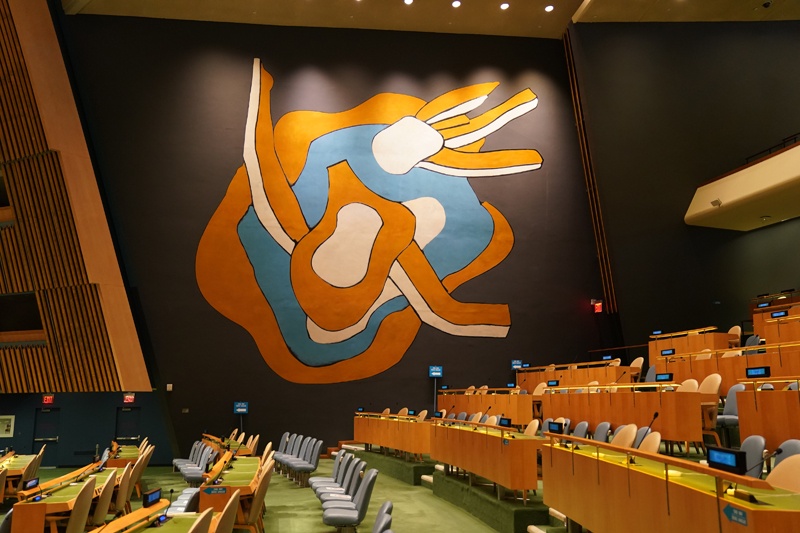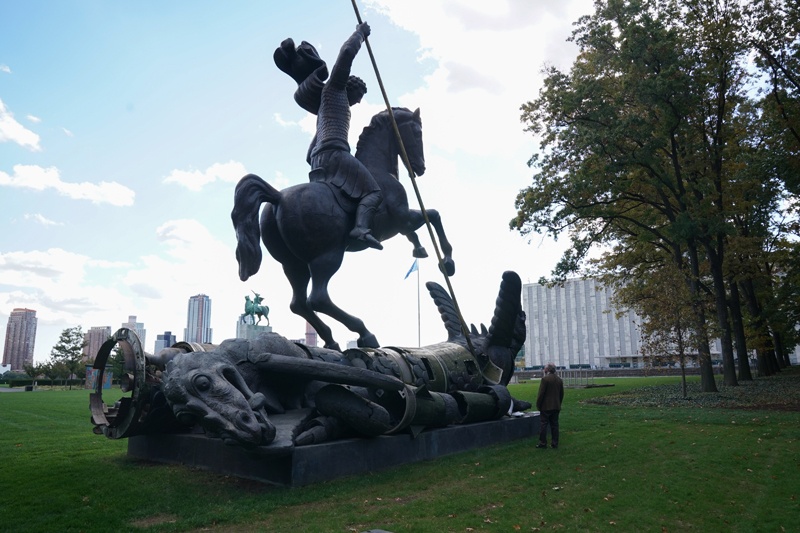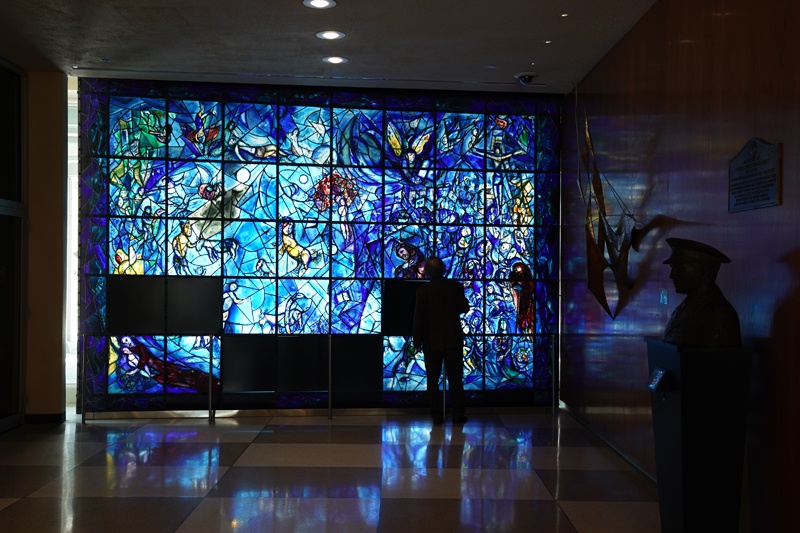 The Fernand Leger murals in the General Assembly Hall. —AFP photos
The Fernand Leger murals in the General Assembly Hall. —AFP photosMarc Chagall, Henry Moore and Fernand Leger. In almost eight decades, the UN headquarters in New York has accumulated numerous artworks, making it home to a little-known but precious collection. The crises that nations deal with inside the center of international diplomacy are expressed through some of the 400 works, which have been donated by 150 of the 193 member countries. "We have an art collection that would be the envy of many museums in the world. And we are not a museum," says Werner Schmidt, who oversees the collection that tourists could partially visit before the pandemic but which currently remains closed to the public.
The artworks represent historical moments, artistic trends and the particularities of donor countries, some of which have ceased to exist, such as East Germany, Yugoslavia and the Soviet Union. Among the most spectacular is "War and Peace" by Brazilian artist Candido Portinari. The two murals frame the entrance to the General Assembly, the heart of the world body. "At the entrance the delegates see a landscape of war and despair and at the exit, a world in peace and harmony," Schmidt told AFP. It's an allegory of the goal of the UN since its creation in 1945: to settle disputes through dialogue.
 The statue “Good Defeats Evil” is seen as Werner Schmidt of the United Nations discusses artworks at The United Nations.
The statue “Good Defeats Evil” is seen as Werner Schmidt of the United Nations discusses artworks at The United Nations.Chagall himself went to the UN in 1964 to deliver his "Windows", a stained glass artwork that is now damaged but nobody knows how. It was part of a collection that UN officials put together after the death of former Secretary General Dag Hammarskjold and fifteen employees in a plane crash en route to negotiate a ceasefire in then Zaire in 1961. Sculptor Henry Moore's admiration for Hammarskjold led him to donate his "Reclining Figure" statue to the UN and is on display in its gardens.
'Positive language'
A monumental work by American artist Barbara Hepworth, a rare woman represented among the artworks, also stands out. Other works include a daily scene from a Saudi desert oasis in solid gold, gifted by Saudi Arabia, and a sculptured gold palm tree with bunches of pearls in place of dates, which was donated by Bahrain. African pieces, a gigantic Chinese vase and furniture by renowned designers also enrich the collection. Some works reflect pivotal moments in a country's history such as a tapestry that depicts the horrors of the Chernobyl nuclear power plant explosion in 1986.
 A stainless window by Marc Chagall.
A stainless window by Marc Chagall.East German sculptor Fritz Cremer's "The Rising Man" was intended to be a celebration of the communist regime but aroused the hostility of intellectuals in the country. Nearby is the sculpture "Good Defeats Evil." Donated by the Soviet Union, it depicts St. George slaying a dragon and is built entirely from nuclear missile casings.
Two abstract frescoes by Leger flank the General Assembly amphitheater. Ex-US president Harry Truman remarked that they resembled bacon and eggs and a rabbit being pulled from a hat. No one ever contradicted him, according to Schmidt. A tapestry depicting Pablo Picasso's "Guernica" greeted members at the entrance to the Security Council chamber as a haunting reminder of the horrors of war for almost four decades before it was returned to Nelson Rockefeller's heirs earlier this year. Any country can donate a work, as long as it's not offensive. "It has to be art that does not upset other member states. It has to be art that speaks to all, in the same positive language," says Schmidt. - AFP
 The statue “Rising Man”.
The statue “Rising Man”.









